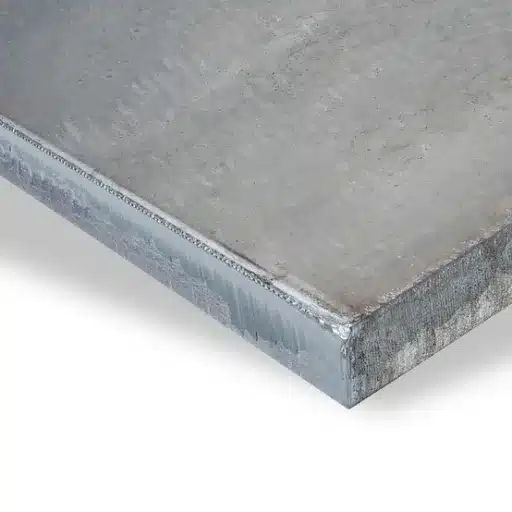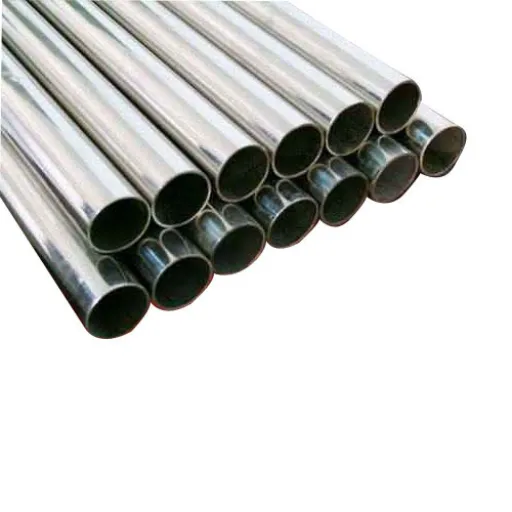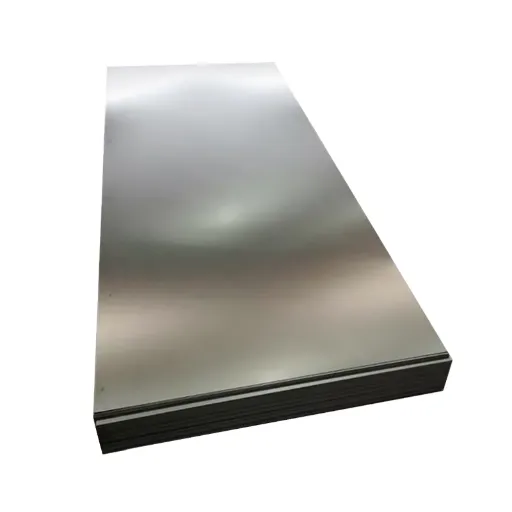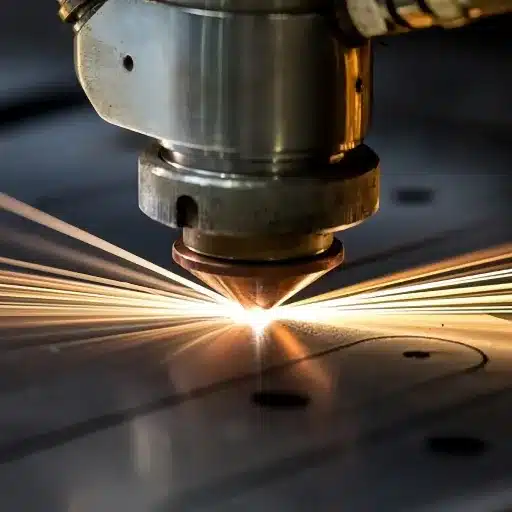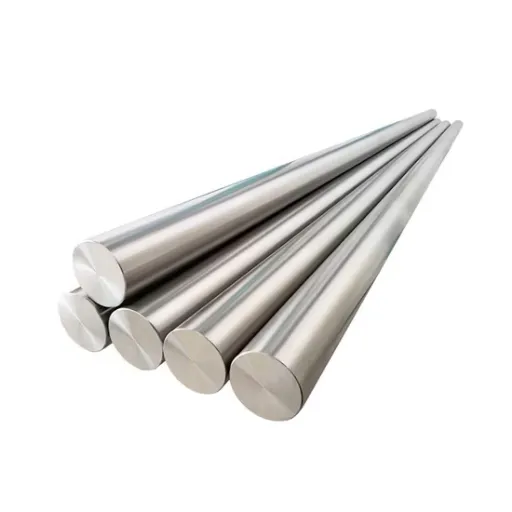The abrasion-resistant (AR) steel is in fact a material that has been widely accepted and used in many different sectors due to its durability and toughness. No matter if your area is construction, mining, or manufacturing, the high-wear environment already asks for materials that are able to resist the extreme conditions. The article that you are reading now is going to be a complete guide to AR steel and plate, revealing the reasons why it is the preferred option for the most challenging applications that need the strongest possible strength. We will go from the main attributes through a long list of uses, and you will see that AR steel is doing a lot for prolonging the lifespan of machinery, cutting down maintenance costs, and boosting performance. Keep reading to see what the advantages of abrasion-resistant steel are, as they are really a breakthrough for heavy-duty industries.
Introduction to Abrasion-Resistant Steel
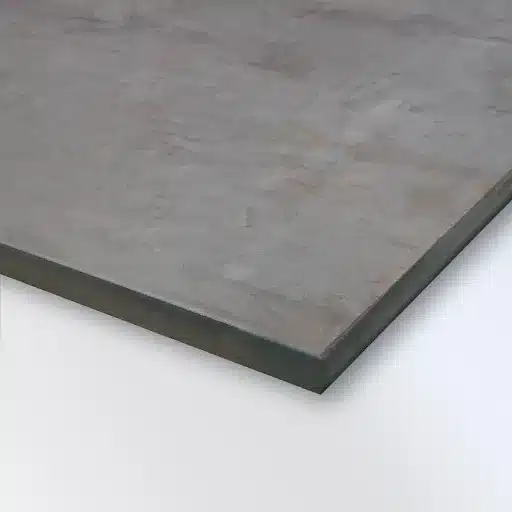
What is Abrasion-Resistant Steel?
Abrasion-resistant (AR) steel, as the name suggests, is a newly developed steel that is capable of withstanding extreme wear and tear from friction, impact, or abrasive forces. The main characteristic of AR steel that sets it apart from the rest is the extreme hardness, which is indicated by the Brinell Hardness Number (BHN). BHN of AR steel is usually between 200 and 600, and the harder the steel, the more resistant it is to being worn away. The most common grades are AR200, AR400, and AR500, which are selected according to the application needs.
The nearly perfect resistance to abrasion of AR steel is mainly due to the interplay of its chemical makeup and the heat treatment it goes through. In most cases, AR steel is made with the help of a higher amount of carbon and the addition of certain alloying elements like manganese, chromium, or boron. These elements increase the resistance of the steel to physical wear while not entirely giving up toughness or ductility.
Importance of Abrasion-Resistant Steel in Various Industries
Mining Industry
The mining sector has a wide range of areas where abrasion-resistant steel is used throughout the entire life cycle of the mining operation i.e. atomically equipment like dump truck beds, crushers, and chutes up to the disposal of these machines. For instance, wear-resistant steels such as Hardox 500 and 600, which are hard but still tough, can be used in places like conveyors and hoppers where heavy minerals and ores are subjected to constant friction and impact. It has been reported that, in the case of mining equipment, using steel with resistance against abrasion can triple the service life of the equipment in comparison with regular materials, which results in a very significant reduction in both downtime and costs of replacement.
Construction Sector
Dozer blades, excavators and concrete mixers used in construction are continually subjected to tough rocks and sand. Steel that is resistant to abrasion is an important factor in the performance of such construction equipment since the same steel will keep the components running well without frequent maintenance. Research claims that the use of wear-resistant steel for construction equipment can save maintenance by 25-30% and at the same time deliver reliable performance even under the most difficult conditions.
Agricultural Industry
Plows, harvesters, and trailers made from AR steel will last much longer and so can effectively be used over an extensive period of time. The efficient use of AR steel will keep production levels up as well as reduce farmers’ repair costs over the growing season. But then again, using AR steel tools in ferts and crop fields is not an option because they are simply too costly.
Composition and Properties of Abrasion-Resistant Steel
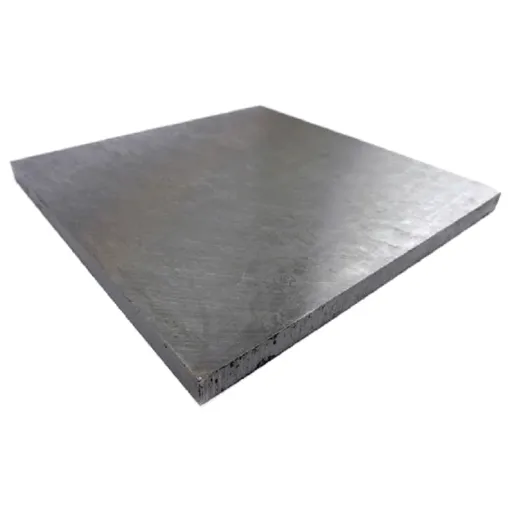
Steel Composition and Hardness Levels
The AR400, AR450, and AR500 steel grades, which are common in the industry, are distinguished by their hardness and are usually expressed in Brinell Hardness Number (BHN) scale. Their properties per grade are:
| Grade | Hardness Range (BHN) | Key Characteristics |
|---|---|---|
| AR400 | 360-440 BHN | Very versatile with good ductility; used in loader buckets, hoppers, and wear liners |
| AR450 | 430-480 BHN | Better wear resistance with flexibility; suitable for mining machinery and heavy construction equipment |
| AR500 | 470-540 BHN | Utmost hardness; perfect for mining chute liners, bulletproof plates, and industrial conveyors |
Note: AR400 has a very wide hardness range of 360-440 BHN and hence, it is very versatile. It is used in many applications like loader buckets, hoppers, and wear liners where a certain level of ductility along with hardness is required.
AR450: A little more hard with a range of 430-480 BHN, AR450 gives a better wear resistance from the very beginning while still letting it be a little flexible which makes it suitable for use in mining machinery and heavy construction equipment.
AR500: Ranging from 470-540 BHN, AR500 is the steel grade known for its utmost hardness and is perfect for extremely abrasive environments such as mining chute liners, bulletproof plates, and industrial conveyors.
Heat Treatments – Quenching & Tempering
Quenching is a heat treatment process that first involves heating the steel to a very high temperature and then swiftly cooling it, usually in water, oil, or air to obtain a hardened microstructure. This leads to the metal getting stronger and being more resistant to wearing down. In the case of quenching, the material can become quite brittle, which is taken care of in the following tempering operation. Then, during tempering, the steel that has just been quenched, is re-heated to a lower temperature usually in the range of 400°F to 1,100°F (200°C to 600°C) and then cooled down gradually. This method does not significantly affect the hardness of the steel while it keeps on reducing the internal stress, making it tough, relieving brittleness, and enhancing ductility.
Key Benefits of Quenching & Tempering:
- Raises tensile strength to as much as 1,500 MPa or more
- Reduces internal stress and brittleness
- Enhances ductility while maintaining hardness
- Improves overall toughness of the material
Quenching and tempering are the two heat treatment processes applied to steel that have recently shown through various studies to raise the steel’s tensile strength to as much as 1,500 MPa or more, depending on the composition and parameter of the process. For example, the very high-strength low-alloy (HSLA) steels have a lot to gain from heat treatment under the controlled conditions. The granting of heat treatment process during quenching and tempering can result in the high as well as the low strength of the product as per the requirement of the specific application, such as mining tools or the longevity of the part in the automobile which is less affected by fatigue.
Applications of Abrasion-Resistant Steel

Use in Construction and Structural Applications
Construction and structural applications extensively employ abrasion-resistant steel because of its strength and ability to endure extreme conditions. Its tough properties that come from its high Brinell hardness number (BHN) make it suitable to be used in places like foundational supports, bridges, and heavy-duty buildings where lots of wear and tear and impacts occur. The AR400 and AR500 grades of steel, for example, are made according to this hardness of BHN, with the former being 400 and the latter 500, and they are used often for protective layering in buildings and machines that work in difficult conditions.
Lifespan Extension
50%
Increase in building and equipment lifespan
Cost Reduction
Significant
Drastically cuts maintenance and replacement costs
In the past, the relevant studies indicated that using abrasion-resistant steel in building designs could elongate the life of the buildings and equipment by even 50%, hence cutting maintenance and replacement costs drastically. Its excellent strength-to-weight ratio also is a factor that makes it the most popular material choice wherever there is a need for limiting the amount of material to be used without compromising safety and performance, as it is in building the tallest buildings or making industrial storage tanks. On top of that, the steel’s hardness and ductility provide it with the capacity to work even in extremely rude conditions such as the ones marked by heavy loads, temperature changes, and corrosive atmosphere.
Mining Industry: Equipment and Machines
The mining industry gets most of its production from really durable, high-performance machines and equipment that are used for extracting, processing, and transporting valuable resources, which, most of the time, are of difficult access. Abrasion-resistant steel is the product that, to a large extent, gives the power to modern mining machinery and equipment to work almost tirelessly without the risk of breakdown. The key parts that are mainly subjected to extreme wear and tear in the process of transferring the crushed and milled ore, rock, or gravel are excavator buckets, crushers, screens, and conveyor belts. However, the application of advanced abrasion-resistant steel grades is accepted as a very effective measure for service life elongation, maintenance cost reduction, and nonproductive time elimination that lead to improved overall operational efficiency.
Mining Equipment Market Insights
The market value of mining equipment worldwide was around $133 billion in 2022 and is expected to rise at a CAGR (Compound Annual Growth Rate) of more than 4% between 2023 and 2030. Modernization of the machinery that is equipped with materials like abrasion-resistant steel, which have become indispensable, is therefore a result of the growing need for critical minerals. For instance, today’s advanced dump trucks are built with wear-resistant steel in their bodies, thus allowing them to have larger payloads with a reduced rate of wear, which, in turn, leads to quicker and cheaper transport of materials.
Comparison with Other Types of Steel
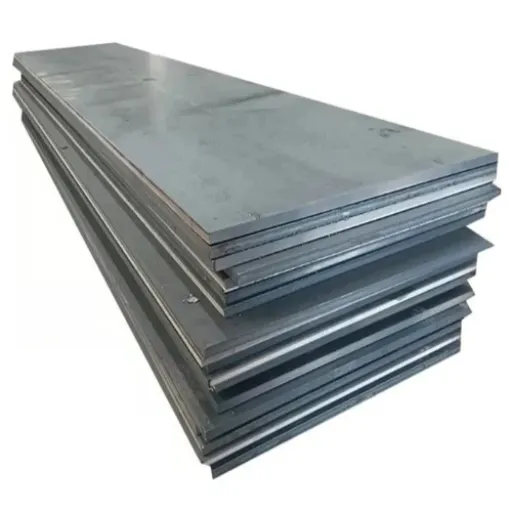
AR Steel vs. Other Steel Types
Abrasion-resistant (AR) steel has its own special perks that are hard to match, hence, it is the most liked material in the industries where durability and good performance of the products are always required. First of all, the total strength differences between AR steel and conventional mild steel are the biggest impact factors in the performance of steel grades, which are for example: 300 to 600 Brinell Hardness (HBW) for AR steel compared to 120 HBW for standard structural steel with A36 grade. One of the main positives of this hardness of AR steel, attained through a mix of carbon and heat treatment, is that it can still withstand wear and tear, thus, turning to solid structural steels for heavy-duty applications is no longer necessary.
| Steel Type | Brinell Hardness (HBW) | Wear Resistance | Typical Applications |
|---|---|---|---|
| AR Steel (AR400) | ~400 HBW | 3x more resistant than mild steel | Dump trucks, conveyor systems, crushers |
| Structural Steel (ASTM A36) | ~120 HBW | Standard resistance | General construction, buildings |
| AR Steel (AR500) | ~500 HBW | 4x more resistant than mild steel | Mining equipment, bulletproof plates |
To illustrate, structural steel grade ASTM A36 is used quite commonly and has a Brinell Hardness of around 120 HBW, while AR400 has a hardness of about 400 HBW, thus, AR400 is almost three times more resistant to wear. The mining, construction, and material-handling sectors, where the use of dump trucks, conveyor systems, and crushers is common, are among those that have been specially provided with AR steels.
Cost-Effectiveness and Longevity Considerations
AR steel is an ultimate choice when it comes to cost-effectiveness in the long run due to its extremely strong character and prolonged lifespan. A study shows that AR steel can last up to five times longer than conventional mild steel, which means that maintenance, both in terms of labor and materials, will not be repeated as often. This prolongation of lifespan will result in even less operational downtime as the machines will not be out of service for repairs as often which ultimately translates to a direct benefit to productivity.
Key Advantages of AR Steel:
- Lifespan: Up to 5x longer than conventional mild steel
- Maintenance Cycles: Mining equipment works 30-50% longer between maintenance
- Operational Downtime: Significantly reduced due to fewer repairs
- Cost Savings: Lower operational costs through extended service life
The switch to AR steel has been a game changer in terms of the saving made and the impact on the industries. A typical example is talking about the mining equipment made of AR steel that can work 30-50% longer n in-between maintenance cycles thus, practically making the cost of operation lower. Furthermore, an advantage of the material’s wear resistance is that it will not lead to failures in the very important parts of the machine like conveyor belts, chutes, and crushers, etc.
Recent Innovations in Abrasion-Resistant Steel
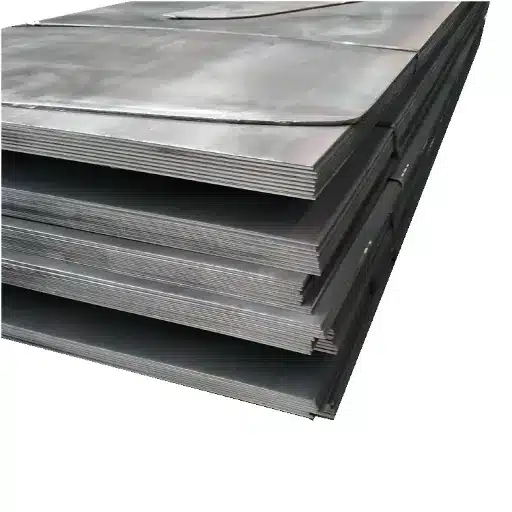
Advancements in Steel Technology
The technology of steel has recently advanced such that it has totally transformed the production and use of abrasion-resistant (AR) steel. Now, AR steel is stronger, more durable, and can be used in previously hard-to-get into industries. One of the most remarkable innovations is the new development of high-hardness AR steels, which are made by optimizing the chemical compositions and heat treatment processes. The resulting enhancements yield such a wear and tear resistance that they are practically the only ones on the market that can last as long as the previous generations of AR steel.
Advanced Alloying Elements
Use of chromium and molybdenum makes AR steel tougher and more resistant to wear while maintaining workability.
Nanoparticle Dispersion
Creates defect-free microstructures for optimal resistance to cycling stresses and enhanced durability.
One of such improvements is the use of advanced alloying elements, consisting of chromium and molybdenum, which makes AR steel tougher and more resistant to being worn out, besides its poor workability. Moreover, the introduction of nanoparticle dispersion techniques is now aimed at creating defect-free microstructures, such that the materials will then have the best possible resistance to cycling stresses. Current data indicate that some of the new AR steel grades have hardness levels going over 600 HB (Brinell Hardness) but still being able to elongate by 10%. This means that they can be bent more before breaking which is an advantage in terms of their being processed.
Impact of Innovations on Industry Standards
The technological developments of recent years have profoundly altered the industry standards for abrasion-resistant steel. The employment of machine learning and AI brings about better and more accurate control over the production parameters which consequently leads to the output steel having better consistency and durability. To quote one specific case, it has been stated that AI-supported predictive analytics can cut maintenance downtime by as much as 30%, according to the latest industry research findings, while at the same time, increasing operational efficiency by 20%.
| Innovation Impact | Metric | Industry Benefit |
|---|---|---|
| AI-Supported Predictive Analytics | 30% reduction in maintenance downtime | Mining & Construction |
| Machine Learning Production Control | 20% increase in operational efficiency | All Industries |
| Enhanced Steel Compositions | 15% reduction in life-cycle costs | Mining Equipment |
Moreover, advances in metallurgy, such as the creation of new steel compositions with enhanced hardness and tensile strength, have resulted in higher performance standards. These new materials with such properties are becoming the norm in several industries like mining and, thus, they are utilized where major equipment life-cycle cost can be reduced by as much as 15%. The same can be said for the construction sector which is also experiencing the positive impact of having lesser and better quality steel being used in buildings making them safer and environmentally friendly.
Reference Sources
-
Mordor Intelligence
- Title: Wear Resistant Steel Plate Market Size & Share Analysis
- Content: This report provides detailed insights into the market trends, applications, and growth drivers for abrasion-resistant steel, including its use in mining, construction, and heavy machinery.
- URL: Mordor Intelligence
-
AZoM (AZo Materials)
- Title: Abrasion-Resistant Steel: Properties and Applications
- Content: This article explains the properties, applications, and manufacturing processes of abrasion-resistant steel, including its grades (AR400, AR450, AR500) and their specific uses.
- URL: AZoM
-
LinkedIn Pulse
- Title: Abrasion Resistant Steel Plate Market Overview
- Content: This analysis discusses the market importance, industry trends, and applications of abrasion-resistant steel in various sectors like mining, construction, and oil & gas.
- URL: LinkedIn Pulse
Frequently Asked Questions (FAQs)
What is abrasion-resistant steel and its applications?
Abrasion-resistant steel is a steel variant that can endure the wear and tear caused by abrasive substances. The steel also has the combined elements of a high carbon content which provides it with hardness and toughness. Its used mainly in mining, constructions, and material handling, where high durability is a prerequisite.
How is AR400 steel different from AR500 steel?
AR400 steel is less hard than AR500 steel and thus at a lower level of hardness. AR400 is made for applications that require moderate abrasive resistance, while AR500 goes beyond with its high hardness allowing it to be worn in heavy abrasion fields. They both belong to the same category of abrasion-resistant steel but are applied in varying scenarios based on the hardness and toughness levels sought after.
What are the properties of abrasion-resistant steel plates?
Abrasion-resistant steel plates have a Brinell hardness rating that shows their capability of being worn away not easily. The characteristics of AR steel plates also encompass formability and weldability that render them suitable for several fabrication processes.
How is the Brinell hardness test conducted on abrasion-resistant steel?
Brinell hardness test takes place with a ball made of hard steel or carbide pressed onto the material surface using a certain amount of load. The size of the indentation made on the steel surface is determined, and hardness value is calculated. This method is used for assessing the hardness levels and the material’s appropriateness for high-wear applications.
Conclusion
Abrasion-resistant steel represents a critical advancement in material science, offering unparalleled durability and cost-effectiveness across multiple industries. From mining operations to construction projects, AR steel continues to prove its value through extended equipment lifespan, reduced maintenance costs, and improved operational efficiency. As technology continues to evolve, innovations in AR steel production and application will further enhance its capabilities, solidifying its position as an indispensable material for heavy-duty industrial applications.

